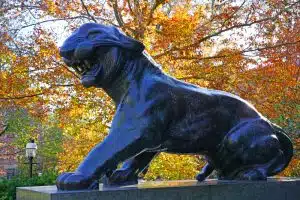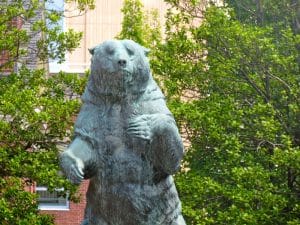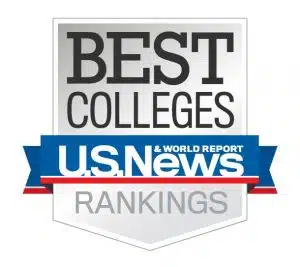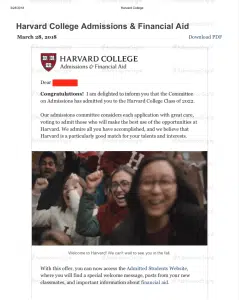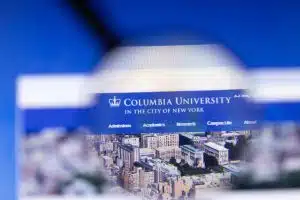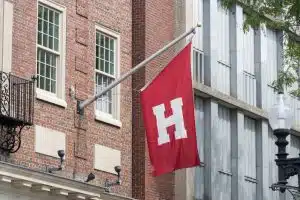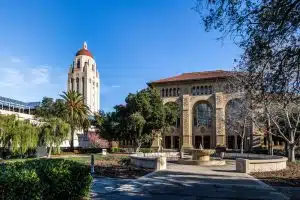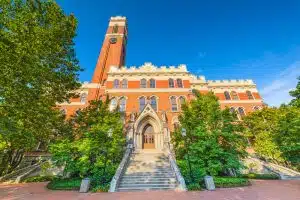Emblems of Excellence: Exploring Ivy League Mascots
Many high school students consider acceptance into an Ivy League university the pinnacle of achievement, even though only three to seven percent of applicants are admitted. The eight universities of the Ivy League boast a rich history that spans hundreds of years, with the “newest” institution being founded in the year Abraham Lincoln passed away. Given this extensive history, student enthusiasm for these institutions often mirrors their affinity for the unique Ivy League mascots.
Mascots are among the most cherished traditions in collegiate athletics. Whether they’re anthropomorphic vegetables, giant inflatable elephants, papier-mache tree nuts, or the enigmatic Dartmouth College mascot, they capture the fun, imagination, and culture of campus life in ways that no lecture hall, football jersey, or logo-branded tote bag can. Mascots come in a variety of shapes and sizes.
What Exactly is a “Mascot”?
In the past, inanimate objects such as a lock of hair or the figurehead on a sailing ship were considered mascots. However, starting in the early 19th century and continuing into the present day, the term ‘mascot’ has been most frequently associated with benevolent animals.
This association with animals began with sports organizations. Early in the history of organized sports, teams would bring actual live animals to competitions. Predatory animals were particularly popular, as they were expected to intimidate opponents.
The creation of the Muppets in the late 1960s marked a significant shift in mascot design. They prompted a transition from live animals and two-dimensional fantasy figures to modern three-dimensional mascots. These endearing puppets not only defined a new medium for mascot creation but also expanded the mascot’s role, turning them into relatable and touchable brand ambassadors. This innovation prompted corporations to recognize the potential of mascots beyond sports, incorporating them into various facets of daily life.
Adopting Muppet-style mascots proved highly successful for both public relations and marketing. Their popularity led numerous corporate and athletic entities to establish their own mascots, reaping similar benefits. As a result, many now view mascots as essential to their marketing and public relations strategies.
What are the Ivy League Mascots?
So, what are the Ivy League mascots? The Ivy League comprises universities that compete in Division I of the National Collegiate Athletic Association (NCAA). Many of these institutions date back to before the Revolutionary War. While the term “Ivy League” is primarily associated with academic excellence, it has also come to denote exceptional performance in athletics. Given that the general public often associates these universities with both academic and athletic prowess, it’s understandable why they attract many of the nation’s top high school graduates. Here are the different Ivy League mascots that represent each school:
Harvard University
In the fall of 1638, young Puritan preacher John Harvard of Charlestown passed away. In his will, he bequeathed his books and half of his estate to a newly established college in the Massachusetts Bay Colony. Out of gratitude, the General Court named the college after him. Today, John Harvard is also commemorated as the Crimson’s official mascot.
Yale University
The Olde English Bulldog known as Handsome Dan XVIII is Yale’s most recent mascot, born on September 23, 2016. His breeder resides in Maine, marking him a true New England native. After the passing of Sherman, Handsome Dan XVII, Yale Athletics embarked on a nationwide search for his successor. It was Andrew Graves ’92S, in 1889, who first named a mascot Handsome Dan, setting a tradition that has continued through the years.
Princeton University
Princeton is the oldest school in the United States and claims to be the first to adopt the tiger nickname. American football players inspired this name in the early 1880s who wore orange and black stripes. By the 1940s, the Tiger mascot was a fixture at sports events, and by the 1970s, the Tigress made her debut alongside the Tiger.
Brown University
Brown initially adopted a burro as its mascot in 1902. However, after a comedic debut, it was replaced by the Bruin, which later evolved into a bear. Bruno, the university’s contemporary mascot, first appeared in 1921 and over the decades transformed from a live bear to a costumed human representation.
University of Pennsylvania
Historically, Penn’s sports teams were associated with a horse-drawn cart. While sportswriters often refer to the Penn team as the Quakers, this name has never been officially adopted as a mascot. Nevertheless, a Benjamin Franklin figure can often be seen at games, embodying the spirit, if not the official mascot, of the university.
Columbia University
In 1910, a blue and white flag featuring a lion and the phrase “Leo Columbiae” (Lion of Columbia) was presented, cementing the lion as the university’s sporting symbol. The modern incarnation of this mascot, Roar-ee the Lion, regularly attends Columbia’s football and basketball games.
Cornell University
While Cornell has never formalized a mascot, a bear has often symbolized the school in its athletic programs. The tradition of live bear mascots began in 1915 but has since transitioned to a costumed student who entertains at various sporting events.
Dartmouth College
Sportswriters began referring to Dartmouth’s football team as the “Indians” as the team gained national prominence in the 1920s. This nickname originated from the College’s initial mission in 1769, which was to educate Native American youth. However, by the mid-1970s, this symbol was retired. Since then, many suggestions for a new mascot have been made, but none have yet secured widespread approval.
Why Does a School Need a Mascot?
Since the beginning of time, mascots have been employed to represent various organizations, including sports teams, schools, corporations, non-governmental organizations, and others. The use of mascots in schools, especially in higher education institutions like colleges and universities, is fairly common.
However, the more pressing question might be whether a high school should have a mascot. While creating a mascot might seem like a significant financial investment for your institution, here are the primary reasons why it’s worth the cost:
It Provides School Identity
Having a school mascot is essential for establishing the institution’s identity. It allows students and teachers to identify with it, much like the different Ivy League mascots. When someone sees your school’s mascot, they should immediately associate it with your educational institution. In today’s digital age, a digital mascot might not suffice. You need a tangible mascot that brings your school’s identity to life and represents it to others.
It’s a Source of Entertainment
Mascots provide entertainment for audiences of all ages. Your school’s mascot can attract attention and elevate athletic competitions and rallies. Whether the mascot gallops through the crowd, dances, hands out promotional items, or even interacts with the rival team’s mascot, it’s often a highlight for students and the broader community.
It Helps Connect with Students
While mascots are integral to a school’s athletics program, their role doesn’t end there. A mascot provides students and faculty with a shared identity, fostering a sense of belonging. This common identity unites everyone under one symbol, connecting students to each other and the institution. Over time, students and teachers may come and go, but the school’s mascot remains a consistent, memorable entity.
It Makes the School Stand Out
Having a mascot doesn’t necessarily boost the performance of your school’s teams or its academic standing. However, it does set your school apart from others. This distinction helps your institution differentiate itself from other educational establishments.
Need Help with Admissions?
Interested in attending one of the Ivy League schools? You’re in the right place. With over 10 years of experience, AdmissionSight has been guiding students through the competitive admissions process.
Let AdmissionSight assist you in putting your best foot forward for your college applications this fall. Reach out to us today to learn more about our services.




